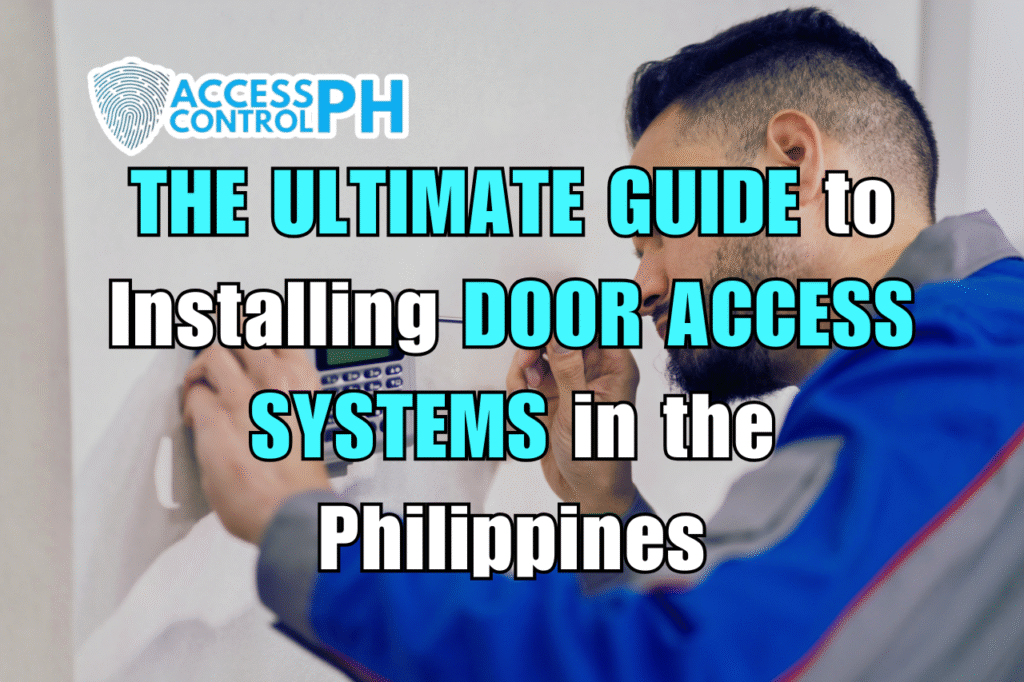
In the Philippines, businesses and property owners are becoming more proactive about security and convenience. Whether you’re managing an office, a residential building, or a retail space, a door access system offers better control over who enters and exits your premises.
But installing such a system involves more than just buying the latest technology—you need to consider the right type of system, compliance with local conditions, and ongoing support. This guide walks you through everything you need to know before installing a door access system in the Philippines.
1. Why Install a Door Access System?
Traditional locks and keys no longer provide the level of security and convenience required in modern facilities. Door access systems deliver:
- Enhanced Security: Prevent unauthorized entry, protect assets, and reduce internal theft.
- Convenience: No more reissuing keys; manage access via cards, biometrics, or mobile apps.
- Audit Trails: Track who entered, when, and where—useful for compliance and investigations.
- Scalability: Add more doors or users as your business grows.
- Integration: Connect with CCTV, alarms, or HR systems for streamlined operations.
2. Types of Door Access Systems in the Philippines
Choosing the right type of system depends on your budget, property, and security needs.
a. Card-Based Access Control
Uses RFID or smart cards. Cost-effective and easy to implement, but cards can be lost or stolen.
b. Biometric Access Control
Uses fingerprints, facial recognition, or palm vein scanning. Highly secure and convenient—perfect for businesses with high foot traffic.
c. PIN Code Keypads
Users enter a numeric code. Simple to use but less secure if codes are shared.
d. Mobile Access Control
Leverages smartphones via NFC or Bluetooth. Convenient for modern offices and tech-savvy users.
e. Hybrid Systems
Combine multiple methods (e.g., card + fingerprint) for added security.
3. Key Factors to Consider Before Installation
a. Security Requirements
- Offices may require time-based restrictions (e.g., only allow entry during work hours).
- Residential areas may prioritize convenience for tenants while securing restricted zones.
b. Budget and ROI
Costs vary depending on hardware, installation, and software licensing. Consider long-term savings—like reduced manpower costs and minimized theft.
c. Scalability
Pick a system that can grow with your business. Cloud-based and modular systems are easier to expand.
d. Compliance & Local Standards
Ensure the system meets Philippine electrical and safety standards, especially for larger installations.
e. Vendor Support
Look for providers with local offices and strong after-sales service to minimize downtime.
4. Steps to Installing a Door Access System

- Site Survey – Assess entry/exit points, power sources, and cabling requirements.
- System Design – Choose the right type (card, biometric, mobile) and integrate with existing infrastructure.
- Procurement – Select quality hardware from trusted brands like ZKTeco, Hikvision, Honeywell, HID, and Suprema.
- Installation – Professional wiring, hardware mounting, and system configuration.
- Testing – Ensure devices work seamlessly under local conditions (humidity, lighting, traffic flow).
- User Enrollment – Register staff, tenants, or visitors into the system.
- Training & Handover – Train administrators and security teams to manage the software and troubleshoot.
5. Common Mistakes to Avoid
- Going Cheap on Hardware – Low-quality devices may fail in the humid Philippine climate.
- Ignoring Power Backup – Without UPS or generators, access points may fail during brownouts.
- Overcomplicating Access – Too many authentication steps frustrate users; balance security with convenience.
- Skipping Maintenance – Regular preventive checks ensure long-term reliability.
6. How Much Does It Cost in the Philippines?
- Basic single-door system: ₱20,000 – ₱40,000 (card or PIN-based).
- Biometric systems: ₱30,000 – ₱70,000 per door.
- Enterprise-level setups: ₱500,000+ for multi-site or high-security facilities.
While initial costs may seem high, savings from reduced manpower, fewer breaches, and improved efficiency often deliver ROI within 1–2 years.
Final Thoughts
Installing a door access system in the Philippines is more than a security upgrade—it’s an investment in safety, efficiency, and long-term growth. Whether you’re a business owner, property manager, or homeowner, choosing the right system and partner will help ensure a smooth installation and maximum ROI.
Get in Touch
Ready to install a reliable and scalable door access system for your property? Our team at VastResult provides expert design, installation, and support tailored to Philippine businesses and residences. Secure your space the smart way—partner with VastResult today.
📞 ContactVastResultat (02) 8404 0740
✉️ Email us atsales@vastresult.com

